Energy-Saving Operation Strategy for Hotels Considering the Impact of COVID-19 in the Context of Carbon Neutrality
Abstract
1. Introduction
- (1)
- Based on the energy consumption characteristics of large-scale public buildings, the energy consumption distribution and operation characteristics of hotel buildings is analyzed in detail.
- (2)
- By collecting energy consumption data from five typical hotel buildings in a tourist city in southern China from 2018 to 2022, the impact of COVID-19 on hotel energy consumption and business characteristics is analyzed in detail.
- (3)
- Combined with the characteristics of economic development in the post-epidemic era, the energy-saving strategies that can be adopted by hotels during the period of epidemic normalization prevention and control are discussed, and the optimization path of low-carbon economic operation of hotel buildings is obtained.
2. Energy Consumption Characteristics of Hotel Buildings
2.1. Energy Consumption Distribution of Large Public Buildings
2.2. The Quantity Distribution and Operation Characteristics of the Hotel
2.3. The Overall Energy Consumption Level of Hotel Buildings
3. Case Study of Hotel Energy-Saving Operation Considering the Impact of COVID-19
3.1. Detailed Energy Consumption Analysis of the Hotel
3.1.1. Evolution Characteristics of Hotel Energy Consumption during COVID-19
3.1.2. Detailed Energy Consumption Distribution of Hotel during COVID-19
3.2. Hotel Management and Tourism Economic Characteristics
4. Energy-Conversation and Emission-Reduction Measures for Hotels in the Post-Epidemic Era
4.1. Energy-Conservation Strategies in Hotel Buildings
4.1.1. Energy-Saving of Maintenance Structure
4.1.2. Energy-Saving of Lighting System
4.1.3. Energy-Saving of Air Conditioning System
4.1.4. Energy Saving of Operation Management
4.2. Low Carbon Economy Operation of Hotel Buildings
4.2.1. Optimized Energy Management Promotes Low-Carbon Operation of Hotel Economy
4.2.2. Low-Carbon and Unique Hotel Design Improve Visitor Occupancy
4.2.3. Green and High-Quality Hotel Service Guarantees User Satisfaction
5. Conclusions
Author Contributions
Funding
Institutional Review Board Statement
Informed Consent Statement
Data Availability Statement
Acknowledgments
Conflicts of Interest
Nomenclature
| RES | Renewable Energy Sources |
| ECER | Energy Conservation and Emission Reduction |
| HVAC | Heating, Ventilation and Air Conditioning |
| EUI | Energy Utilization Intensity |
| B&B | Bed and Breakfast |
| RevPAR | Revenue Per Available Room |
References
- Liu, D. Value evaluation system of ecological environment damage compensation caused by air pollution. Environ. Technol. Innov. 2021, 22, 101473. [Google Scholar] [CrossRef]
- Mouratidis, K.; Yiannakou, A. COVID-19 and urban planning: Built environment, health, and well-being in Greek cities before and during the pandemic. Cities 2022, 121, 103491. [Google Scholar] [CrossRef] [PubMed]
- Wen, S.; Liu, H. Research on energy conservation and carbon emission reduction effects and mechanism: Quasi-experimental evidence from China. Energy Policy 2022, 169, 113180. [Google Scholar] [CrossRef]
- Hussain, S.A.; Huang, G.; Yuen, R.K.K.; Wang, W. Adaptive regression model-based real-time optimal control of central air-conditioning systems. Appl. Energy 2020, 276, 115427. [Google Scholar] [CrossRef]
- Palani, H.; Karatas, A. Holistic approach for reducing occupants’ energy consumption in hotel buildings. J. Clean. Prod. 2022, 365, 132679. [Google Scholar] [CrossRef]
- Meng, W.; Xu, L.; Hu, B.; Zhou, J.; Wang, Z. Quantifying direct and indirect carbon dioxide emissions of the Chinese tourism industry. J. Clean. Prod. 2016, 126, 586–594. [Google Scholar] [CrossRef]
- Lu, S.; Wei, S.; Zhang, K.; Kong, X.; Wu, W. Investigation and analysis on the energy consumption of starred hotel buildings in Hainan Province, the tropical region of China. Energy Convers. Manag. 2013, 75, 570–580. [Google Scholar] [CrossRef]
- Wang, D.; Meng, J.; Zhang, T. Post-evaluation on energy saving reconstruction for hotel buildings, a case study in Jiangsu, China. Energy Build. 2021, 251, 111316. [Google Scholar] [CrossRef]
- Acosta, I.; Campano, M.; Molina, J.F. Window design in architecture: Analysis of energy savings for lighting and visual comfort in residential spaces. Appl. Energy 2016, 168, 493–506. [Google Scholar] [CrossRef]
- Li, Z.; Xie, Y.; Zhao, Q. Thermal design method of building wall considering solar energy utilization and thermal insulation. Energy Build. 2022, 257, 111772. [Google Scholar] [CrossRef]
- Dhirasasna, N.; Sahin, O. A system dynamics model for renewable energy technology adoption of the hotel sector. Renew. Energy 2021, 163, 1994–2007. [Google Scholar] [CrossRef]
- Liu, C.; Zhang, S.; Chen, X.; Xu, W.; Wang, K. A comprehensive study of the potential and applicability of photovoltaic systems for zero carbon buildings in Hainan Province, China. Sol. Energy 2022, 238, 371–380. [Google Scholar] [CrossRef]
- Lin, Y.-H.; Lin, M.-D.; Tsai, K.-T.; Deng, M.-J.; Ishii, H. Multi-objective optimization design of green building envelopes and air conditioning systems for energy conservation and CO2 emission reduction. Sustain. Cities Soc. 2021, 64, 102555. [Google Scholar] [CrossRef]
- Fathabadi, H. Ultra high benefits system for electric energy saving and management of lighting energy in buildings. Energy Convers. Manag. 2014, 80, 543–549. [Google Scholar] [CrossRef]
- Vujnović, N.; Dović, D. Cost-optimal energy performance calculations of a new nZEB hotel building using dynamic simulations and optimization algorithms. J. Build. Eng. 2021, 39, 102272. [Google Scholar] [CrossRef]
- Zhang, D.; Li, H.; Zhu, H.; Zhang, H.; Goh, H.H.; Wong, M.C.; Wu, T. Impact of COVID-19 on Urban Energy Consumption of Commercial Tourism City. Sustain. Cities Soc. 2021, 73, 103133. [Google Scholar] [CrossRef]
- Yu, M.; Cheng, M.; Yang, L.; Yu, Z. Hotel guest satisfaction during COVID-19 outbreak: The moderating role of crisis response strategy. Tour. Manag. 2022, 93, 104618. [Google Scholar] [CrossRef]
- Bangwal, D.; Suyal, J.; Kumar, R. Hotel building design, occupants’ health and performance in response to COVID 19. Int. J. Hosp. Manag. 2022, 103, 103212. [Google Scholar] [CrossRef]
- Shin, H.; Sharma, A.; Nicolau, J.L.; Kang, J. The impact of hotel CSR for strategic philanthropy on booking behavior and hotel performance during the COVID-19 pandemic. Tour. Manag. 2021, 85, 104322. [Google Scholar] [CrossRef]
- Cheng, S.-C.; Kao, Y.-H. The impact of the COVID-19 pandemic on job satisfaction: A mediated moderation model using job stress and organizational resilience in the hotel industry of Taiwan. Heliyon 2022, 8, e09134. [Google Scholar] [CrossRef]
- Ju, Y.; Jang, S. The Effect of COVID-19 on hotel booking intentions: Investigating the roles of message appeal type and brand loyalty. Int. J. Hosp. Manag. 2023, 108, 103357. [Google Scholar] [CrossRef] [PubMed]
- Khalil, M.; McGough, A.S.; Pourmirza, Z.; Pazhoohesh, M.; Walker, S. Machine Learning, Deep Learning and Statistical Analysis for forecasting building energy consumption—A systematic review. Eng. Appl. Artif. Intell. 2022, 115, 105287. [Google Scholar] [CrossRef]
- Zhang, S.; Ocłoń, P.; Klemeš, J.J.; Michorczyk, P.; Pielichowska, K.; Pielichowski, K. Renewable energy systems for building heating, cooling and electricity production with thermal energy storage. Renew. Sustain. Energy Rev. 2022, 165, 112560. [Google Scholar] [CrossRef]
- Zhang, D.; Ding, Y.; Wang, Y.; Fan, L. Towards ultra-low energy consumption buildings: Implementation path strategy based on practical effects in China. Energy Sustain. Dev. 2022, 70, 537–548. [Google Scholar] [CrossRef]
- Zhang, Y.; Teoh, B.K.; Zhang, L.; Chen, J.; Wu, M. Data-driven estimation of building energy consumption and GHG emissions using explainable artificial intelligence. Energy 2022, 262, 125468. [Google Scholar] [CrossRef]
- Guo, Y.-Y. Revisiting the building energy consumption in China: Insights from a large-scale national survey. Energy Sustain. Dev. 2022, 68, 76–93. [Google Scholar] [CrossRef]
- Rana, A.; Kamali, M.; Riyadh, M.M.; Sultana, S.R.; Kamal, M.R.; Alam, M.S.; Hewage, K.; Sadiq, R. Energy efficiency in residential buildings amid COVID-19: A holistic comparative analysis between old and new normal occupancies. Energy Build. 2022, 277, 112551. [Google Scholar] [CrossRef]
- National Tourism Administration on 2021 National Star-Rated Hotels Statistical Bulletin. 2021. Available online: https://mct.gov.cn (accessed on 21 October 2022).
- Shao, M.; Wang, X.; Bu, Z.; Chen, X.; Wang, Y. Prediction of energy consumption in hotel buildings via support vector machines. Sustain. Cities Soc. 2020, 57, 102128. [Google Scholar] [CrossRef]
- Xin, Y.; Lu, S.; Zhu, N.; Wu, W. Energy consumption quota of four and five star luxury hotel buildings in Hainan province, China. Energy Build. 2012, 45, 250–256. [Google Scholar] [CrossRef]
- Wang, J.C.; Huang, K.-T. Energy consumption characteristics of hotel's marketing preference for guests from regions perspective. Energy 2013, 52, 173–184. [Google Scholar] [CrossRef]
- Sheng, Y.; Miao, Z.; Zhang, J.; Lin, X.; Ma, H. Energy consumption model and energy benchmarks of five-star hotels in China. Energy Build. 2018, 165, 286–292. [Google Scholar] [CrossRef]
- Tong, P.; Zhao, C.; Wang, H. Research on the Survival and Sustainable Development of Small and Medium-Sized Enterprises in China under the Background of Low-Carbon Economy. Sustainability 2019, 11, 1221. [Google Scholar] [CrossRef]
- Xu, P.; Chan, E.H.W.; Qian, Q.K. Success factors of energy performance contracting (EPC) for sustainable building energy efficiency retrofit (BEER) of hotel buildings in China. Energy Policy 2011, 39, 7389–7398. [Google Scholar] [CrossRef]
- Wang, Y.; Wang, Z.; Li, X.; Li, H.; Yang, Y.; Xiong, J. Analysis on occupant behavior of split air conditioner in hotel buildings in the Yangze River Region. Energy Build. 2022, 265, 112042. [Google Scholar] [CrossRef]
- Qin, X.; Wang, D.; Jin, Z.; Wang, J.; Zhang, G.; Li, H. A comprehensive investigation on the effect of internal heat exchanger based on a novel evaluation method in the transcritical CO2 heat pump system. Renew. Energy 2021, 178, 574–586. [Google Scholar] [CrossRef]
- Qin, X.; Zhang, Y.; Wang, D.; Chen, J. System development and simulation investigation on a novel compression/ejection transcritical CO2 heat pump system for simultaneous cooling and heating. Energy Convers. Manag. 2022, 259, 115579. [Google Scholar] [CrossRef]
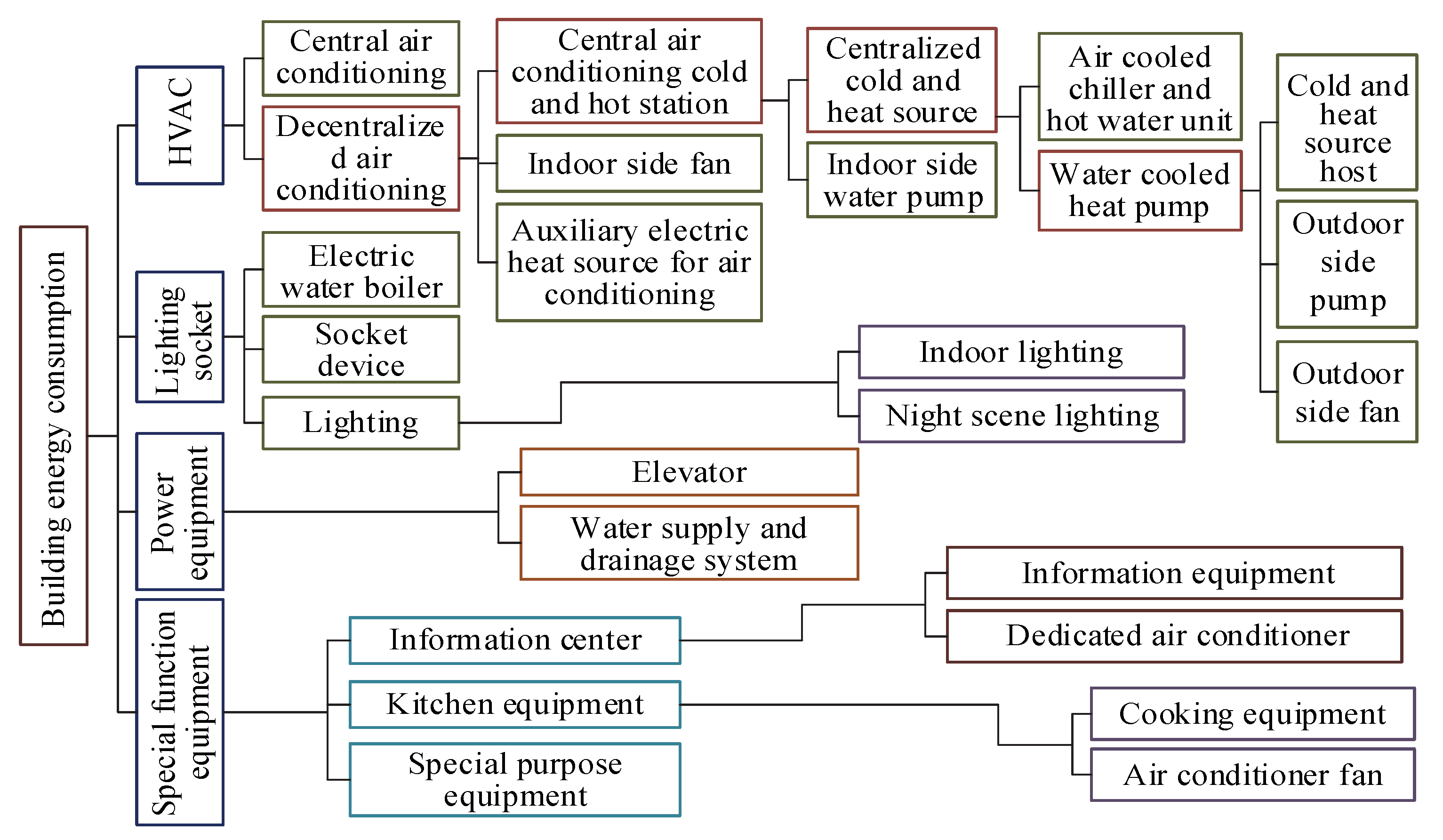
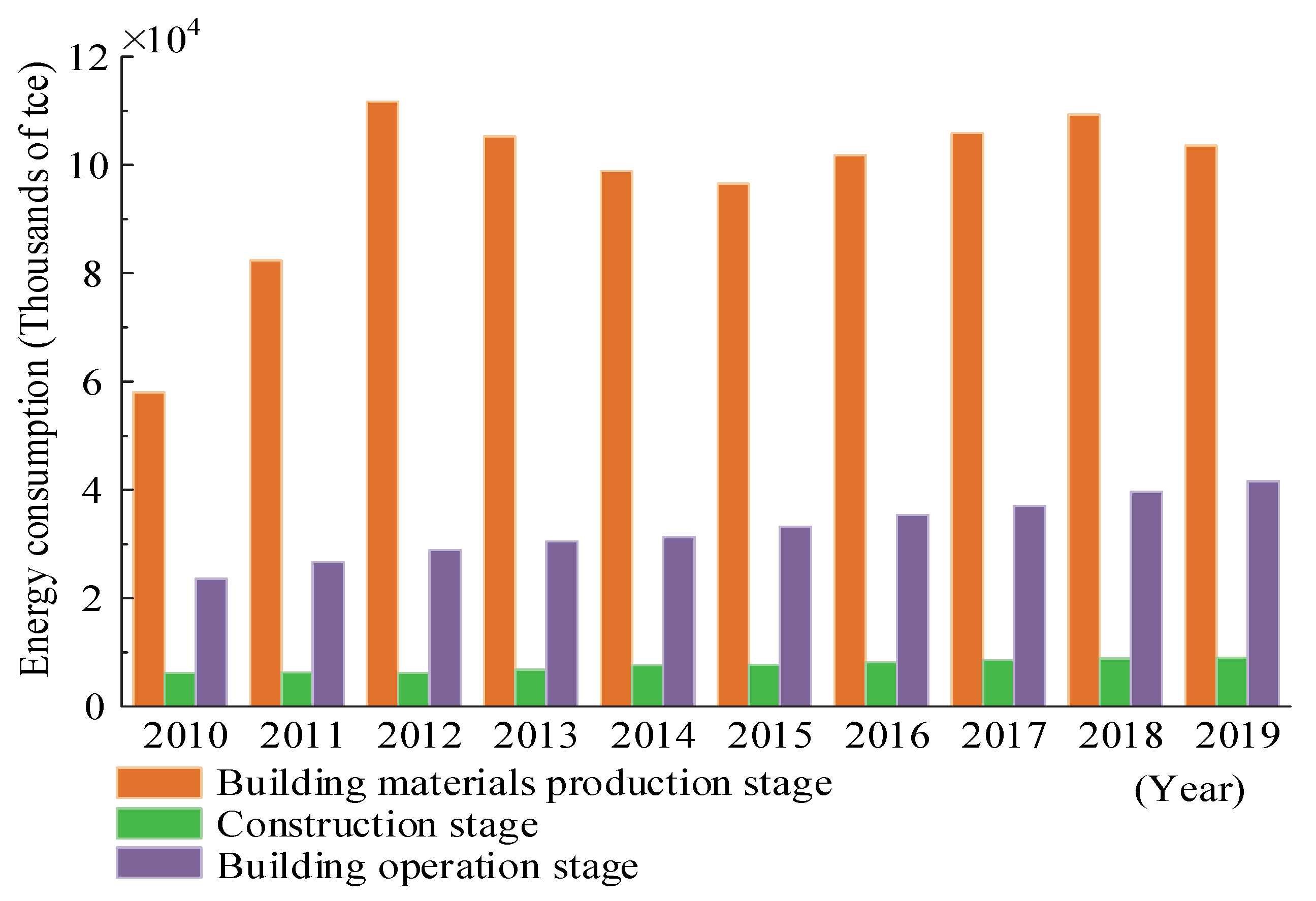
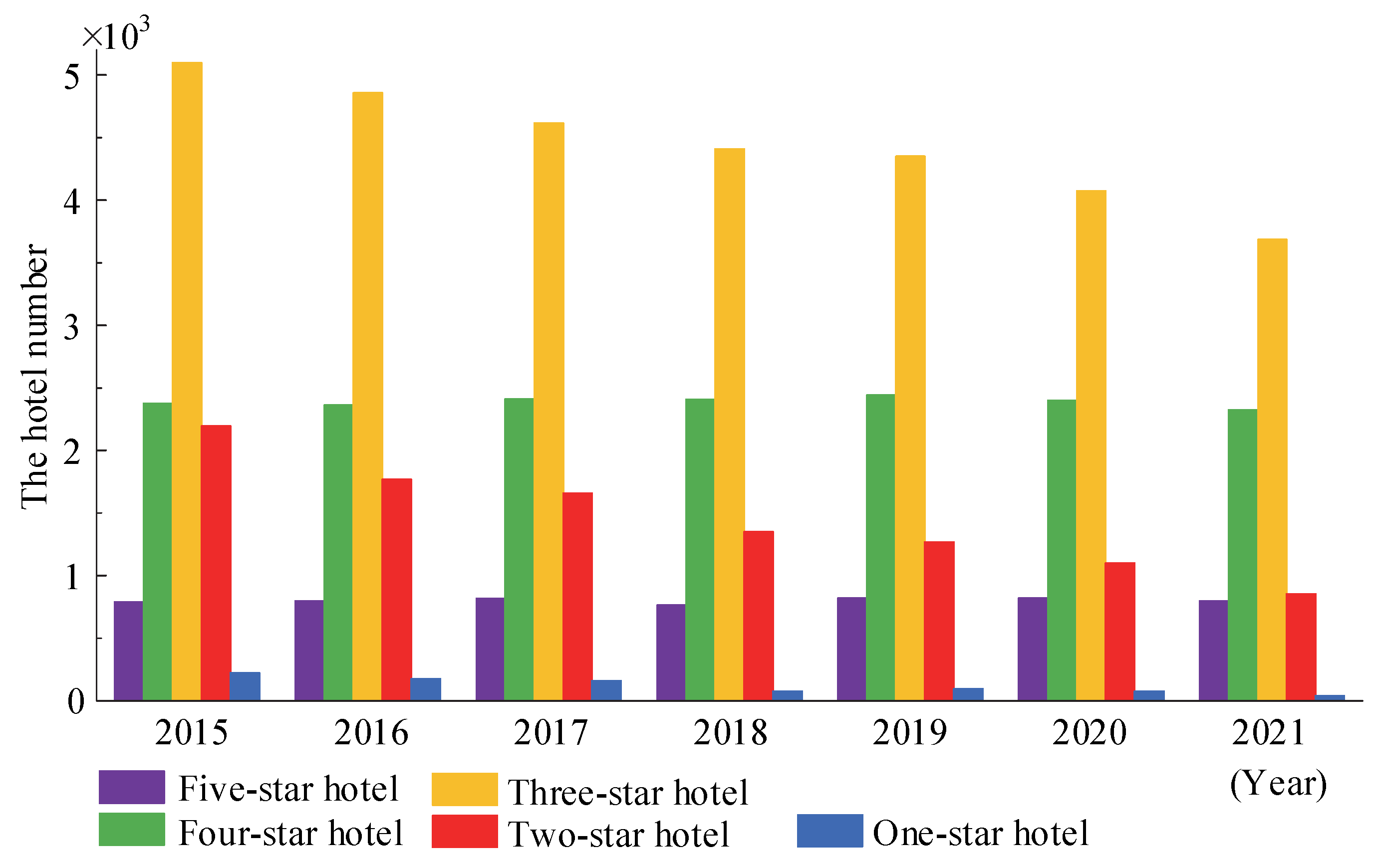

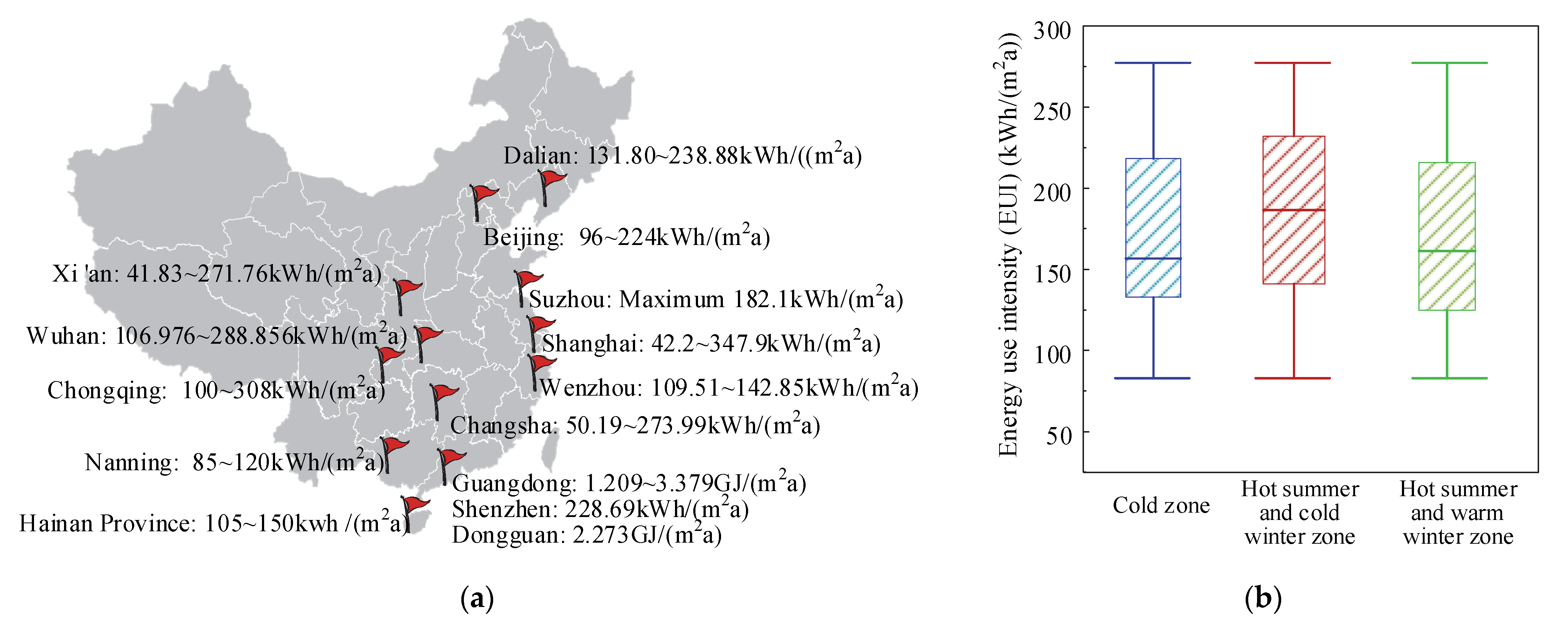
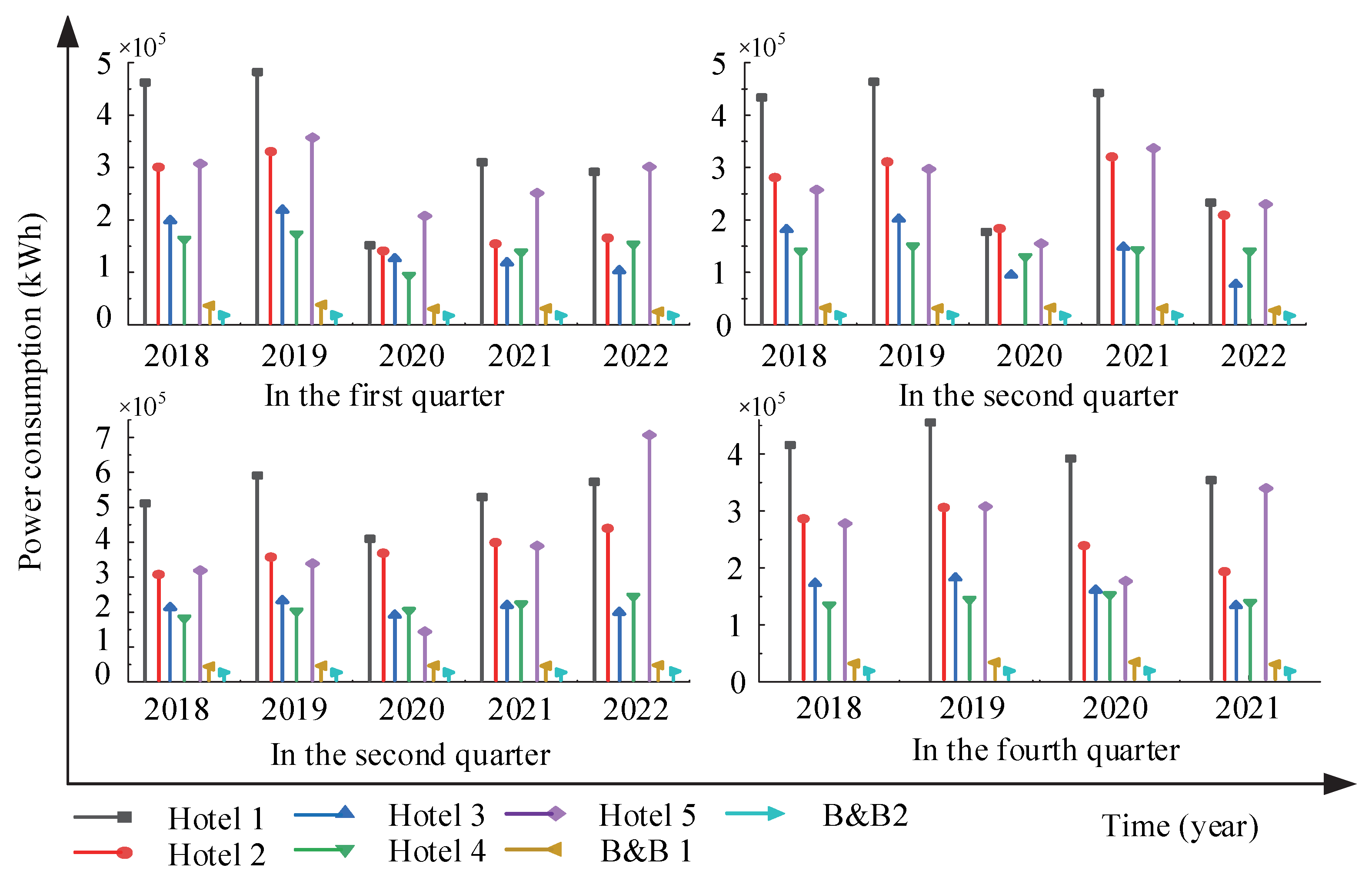
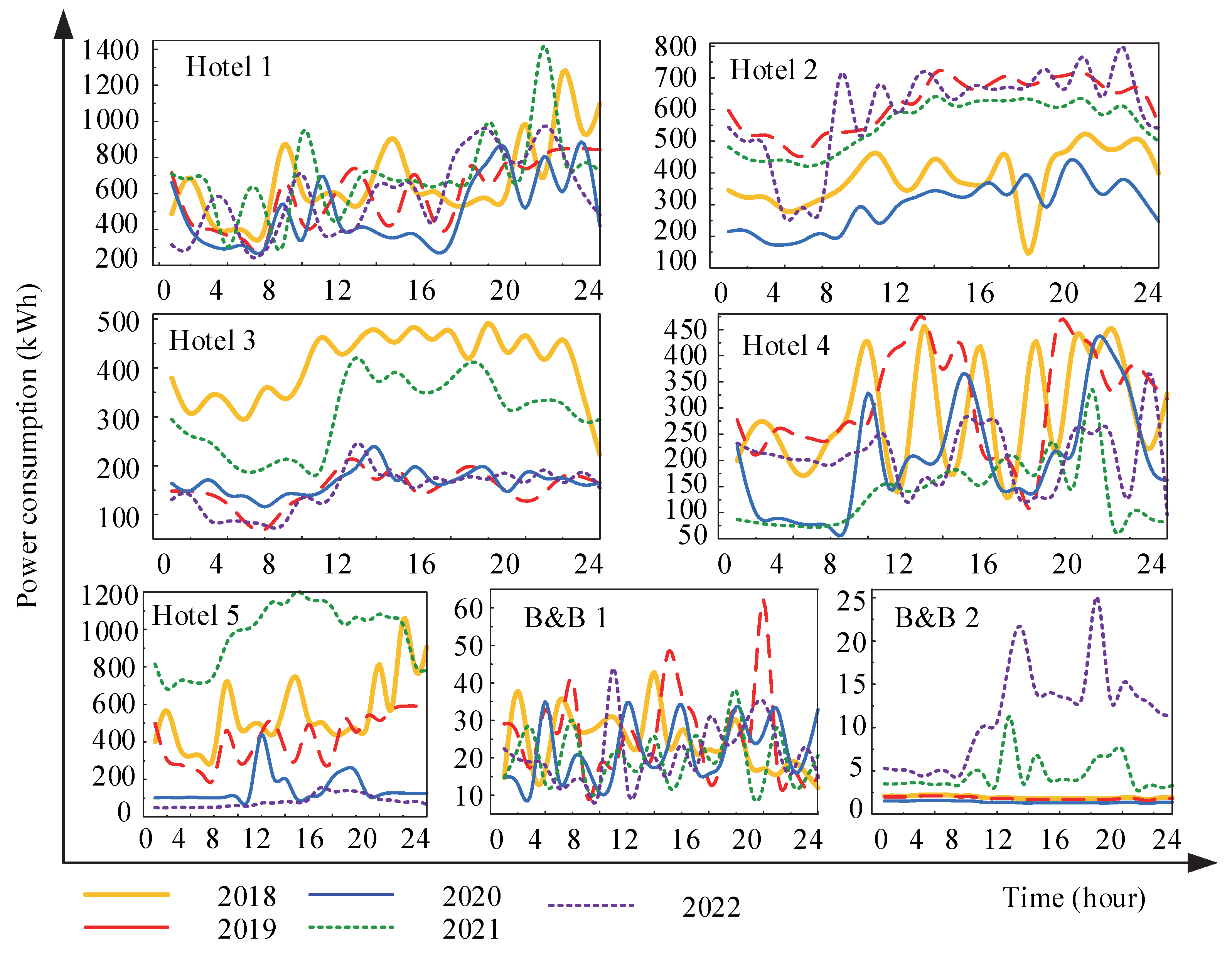
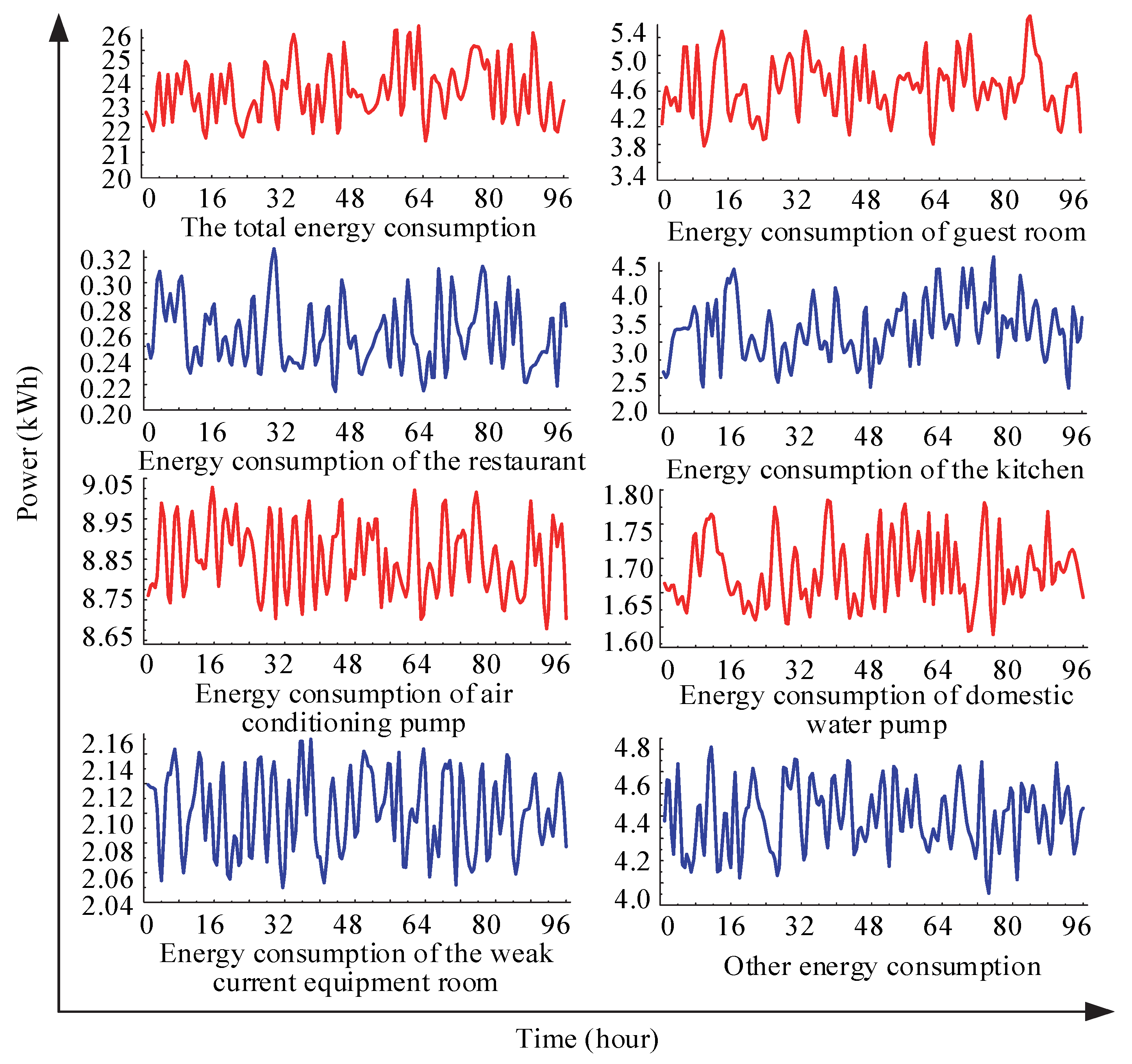
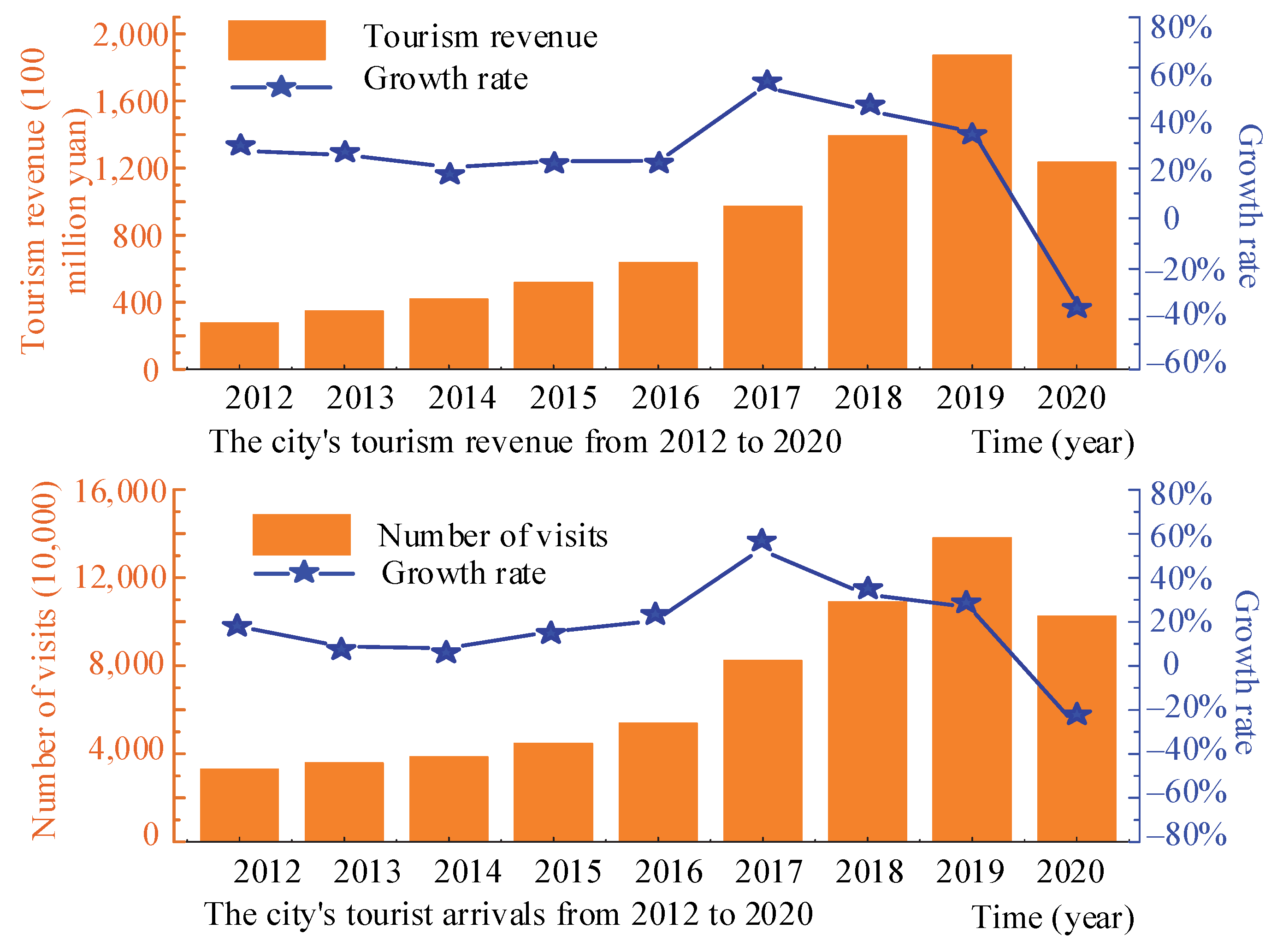
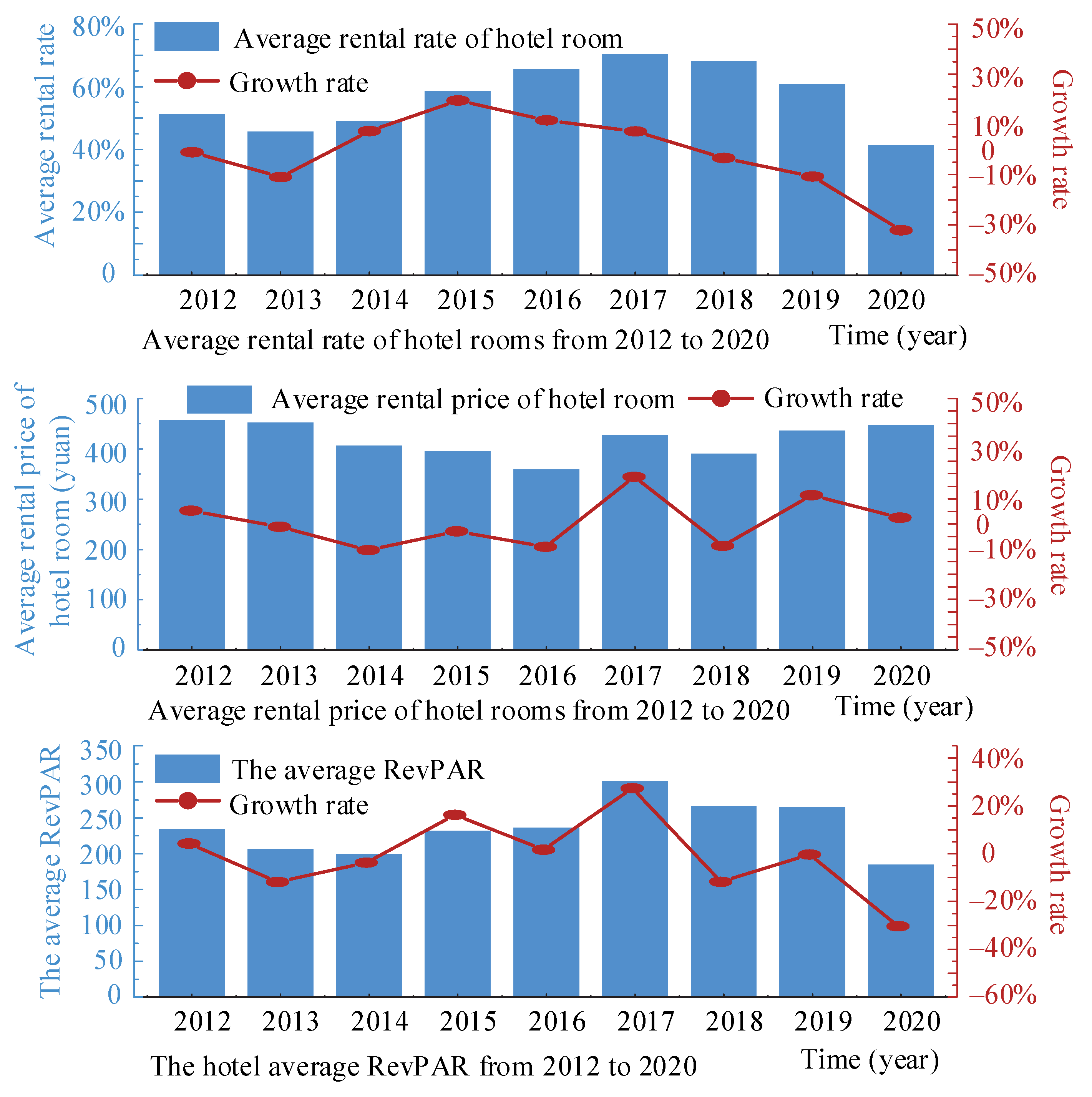
| Hotel or B&B | Total Building Area/m2 (Excluding Green Area) | Building Floor | Single Floor Area of Building | Hotel Star Index |
|---|---|---|---|---|
| Hotel | 80,000 | 9 | 8888.88 m2 | Five-star |
| Hotel 2 | 40,000 | 7 | 4000~4500 m2 | Five-star |
| Hotel 3 | 28,000 | 4 | 7000 m2 | Four-star |
| Hotel 4 | 10,000 | 9 | 1111 m2 | Four-star |
| Hotel 5 | 46,800 | 6 | 7800 m2 | Four-star |
| B&B 1 | 1120 | 3.5 | 320 m2 | -- |
| B&B 2 | 1150 | 5 | 230 m2 | -- |
| Reasons for Choosing Environmentally friendly Accommodation | Popular Green and Environmentally friendly Accommodation Facilities | ||
|---|---|---|---|
| Reduce damage to local environment | 64% | Solar energy | 70% |
| More localized accommodation experience | 49% | Recyclable water system | 56% |
| Environmentally friendly accommodation is more conducive to local development | 44% | Water saving bathroom | 43% |
| More opportunities to taste local specialties and green organic food | 31% | Original organic restaurant or food | 48% |
| Experience new accommodation trends | 36% | Indoor goods recycling column | 29% |
Publisher’s Note: MDPI stays neutral with regard to jurisdictional claims in published maps and institutional affiliations. |
© 2022 by the authors. Licensee MDPI, Basel, Switzerland. This article is an open access article distributed under the terms and conditions of the Creative Commons Attribution (CC BY) license (https://creativecommons.org/licenses/by/4.0/).
Share and Cite
Wu, Y.; Xin, B.; Zhu, H.; Ye, Z. Energy-Saving Operation Strategy for Hotels Considering the Impact of COVID-19 in the Context of Carbon Neutrality. Sustainability 2022, 14, 14919. https://doi.org/10.3390/su142214919
Wu Y, Xin B, Zhu H, Ye Z. Energy-Saving Operation Strategy for Hotels Considering the Impact of COVID-19 in the Context of Carbon Neutrality. Sustainability. 2022; 14(22):14919. https://doi.org/10.3390/su142214919
Chicago/Turabian StyleWu, Yutong, Bin Xin, Hongyu Zhu, and Zifei Ye. 2022. "Energy-Saving Operation Strategy for Hotels Considering the Impact of COVID-19 in the Context of Carbon Neutrality" Sustainability 14, no. 22: 14919. https://doi.org/10.3390/su142214919
APA StyleWu, Y., Xin, B., Zhu, H., & Ye, Z. (2022). Energy-Saving Operation Strategy for Hotels Considering the Impact of COVID-19 in the Context of Carbon Neutrality. Sustainability, 14(22), 14919. https://doi.org/10.3390/su142214919





